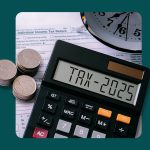Zero-based budgeting sounds complicated, but it’s actually a simple way to take control of your money. If you’ve ever felt lost when looking at your bank account or worried about where your paycheck goes, you’re not alone. Many people struggle with budgeting, especially if math isn’t their strong suit. The good news is, zero-based budgeting doesn’t require you to be a math whiz. It just asks you to give every dollar a job, so nothing slips through the cracks. If you want to stop guessing where your money went and start feeling confident about your finances, these tips are for you.
1. Start With Your Real Income
Zero-based budgeting begins with knowing exactly how much money you bring in each month. Don’t guess or round up. Look at your paychecks, side hustle income, or any other money you receive. Write down the actual number you get after taxes. If your income changes from month to month, use the lowest amount you expect to get. This way, you won’t end up short. If you get paid weekly or biweekly, add up all the paychecks you’ll get in the month. This is your starting point. You don’t need to do any fancy calculations—just add up the numbers you see on your pay stubs.
2. List Every Expense—Even the Small Ones
Many people overlook small expenses, but they can add up quickly. Write down everything you spend money on, from rent and groceries to coffee and streaming services. Don’t leave out things like birthday gifts or pet food. If you’re not sure what you spend, look at your bank statements from the last month. This helps you spot expenses you might forget. The goal is to make sure every dollar you earn has a place to go. If you’re worried about missing something, keep a notebook or use your phone to jot down every purchase for a week. This makes it easier to see where your money really goes.
3. Use Simple Tools—No Math Skills Needed
You don’t need a spreadsheet or a calculator to do zero-based budgeting. There are free apps and printable worksheets that do the math for you. Tools like EveryDollar or YNAB let you plug in your income and expenses, and they’ll show you if your budget balances. If you prefer paper, just write your income at the top of a page and subtract each expense as you list it. When you reach zero, you’re done. If you end up with a negative number, you need to cut something. If you have money left over, assign it to savings or debt. The key is to keep it simple so you don’t get overwhelmed.
4. Break Expenses Into Categories
Grouping your expenses makes budgeting easier. Instead of listing every single item, put them into categories like housing, food, transportation, and fun. This helps you see where your money goes and makes it easier to spot areas where you can cut back. For example, if your “food” category is bigger than your “rent” category, you might want to cook at home more often. Categories also help you remember expenses you might forget, like car insurance or school supplies. You don’t need to be exact—just make sure every expense fits somewhere.
5. Adjust as You Go—Mistakes Are Normal
Nobody gets their budget perfect the first time. If you overspend in one category, don’t panic. Just move money from another category or adjust your plan for next month. Zero-based budgeting is flexible. The goal is to give every dollar a job, not to punish yourself for making mistakes. If you find you always forget about specific expenses, add them to your list for next time. If you receive a surprise bill, consider reducing your costs elsewhere to avoid additional expenses. The more you practice, the easier it gets. Remember, budgeting is a skill, not a test.
6. Make It a Habit—Check In Weekly
Budgeting works best when you check in often. Set aside a few minutes each week to look at your budget. See if you’re sticking to your plan or if you need to make changes. This doesn’t have to be a big deal—just a quick check to make sure you’re on track. If you use an app, it might send you reminders. If you use paper, keep your budget somewhere you can easily see it. The more often you check in, the less likely you are to forget about your plan. Over time, this habit makes zero-based budgeting feel natural, even if you’re not good at math.
Zero-Based Budgeting Is for Everyone
You don’t need to love numbers to make zero-based budgeting work. The real secret is being honest about your income and expenses, and checking in regularly. When you give every dollar a job, you take control of your money—no advanced math required. Zero-based budgeting helps you see where your money goes and gives you the power to make changes. It’s a straightforward system that works for anyone, even those who have struggled with budgeting in the past. Try it for a month and see how it feels. You might be surprised at how much more confident you feel about your finances.
What’s your biggest challenge with zero-based budgeting? Share your thoughts in the comments.
Read More
Why Budgeting Feels Like Punishment—And How to Make It Feel Empowering
What Are The Best Budgeting Apps? Here Are The Top 17 To Turbocharge Your Savings
Read the full article here
















